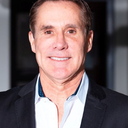Hi, I have used silastic cheek, chin and lip implants for over 30 years. They are the "gold" standard by which all other facial implants are measured. Medpore becomes integrated into the bone as soon as 1 month making removal or replacement very difficult should you ever choose to do so. In addition, aesthetically, I prefer the silastic implants and for those two reasons I do not use Medpore facial implants. The rate of infection with properly placed silastic implants (cheek, chin or lip) is quite rare.

